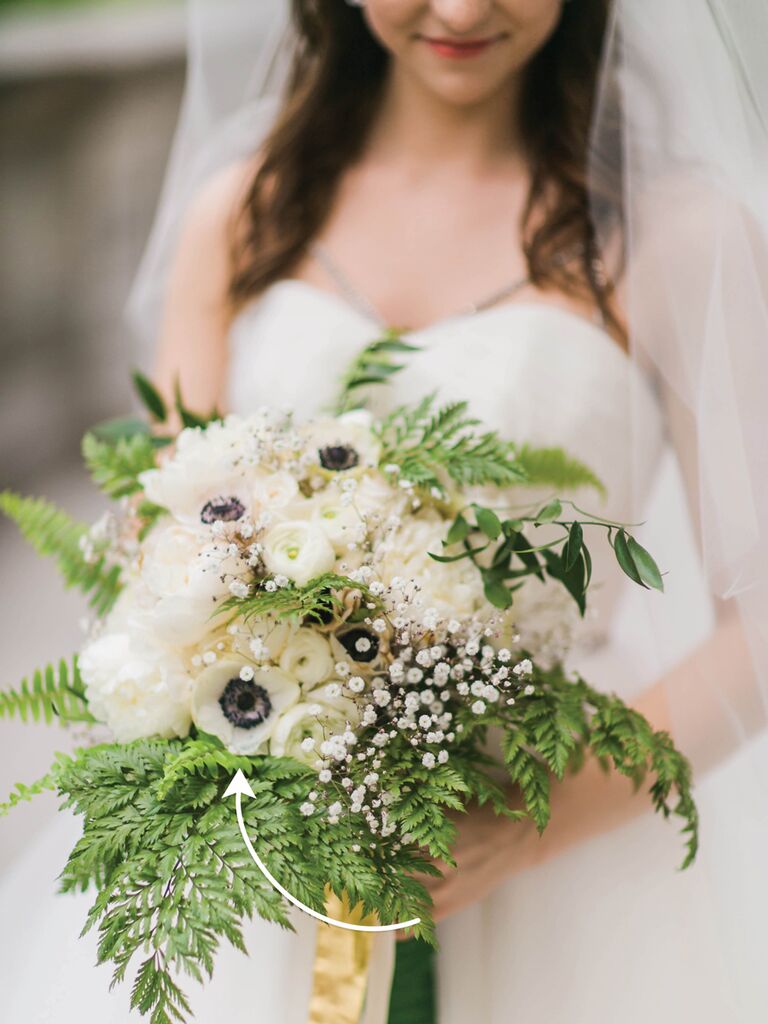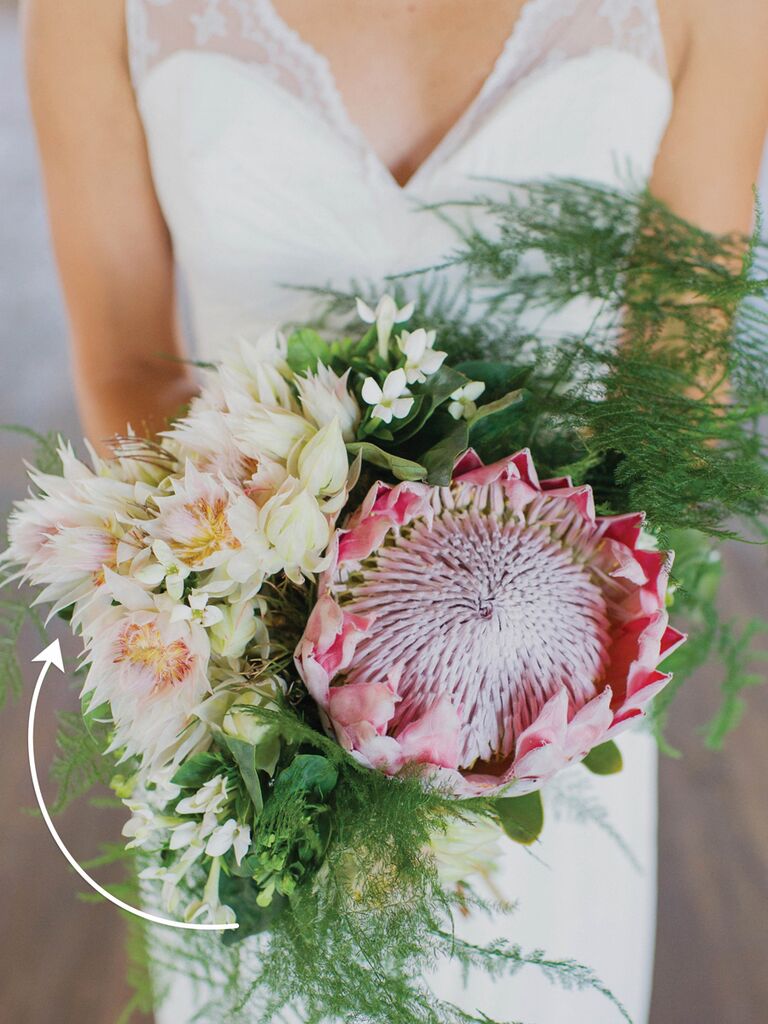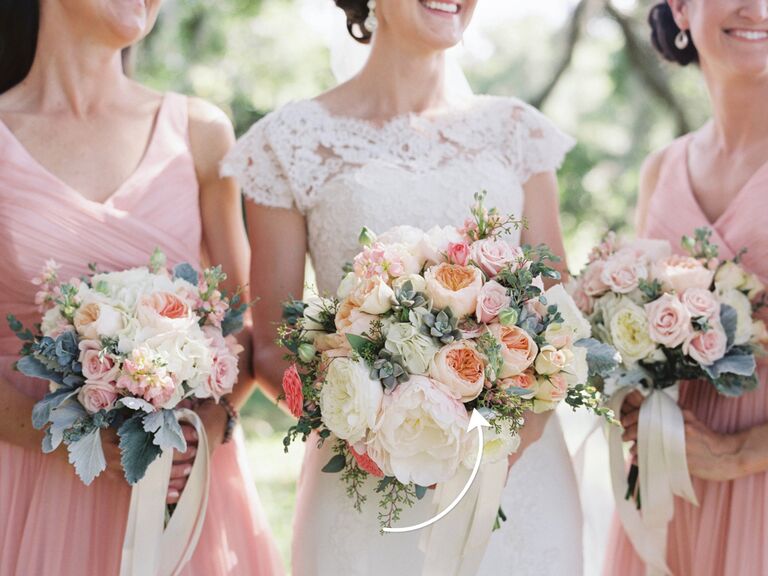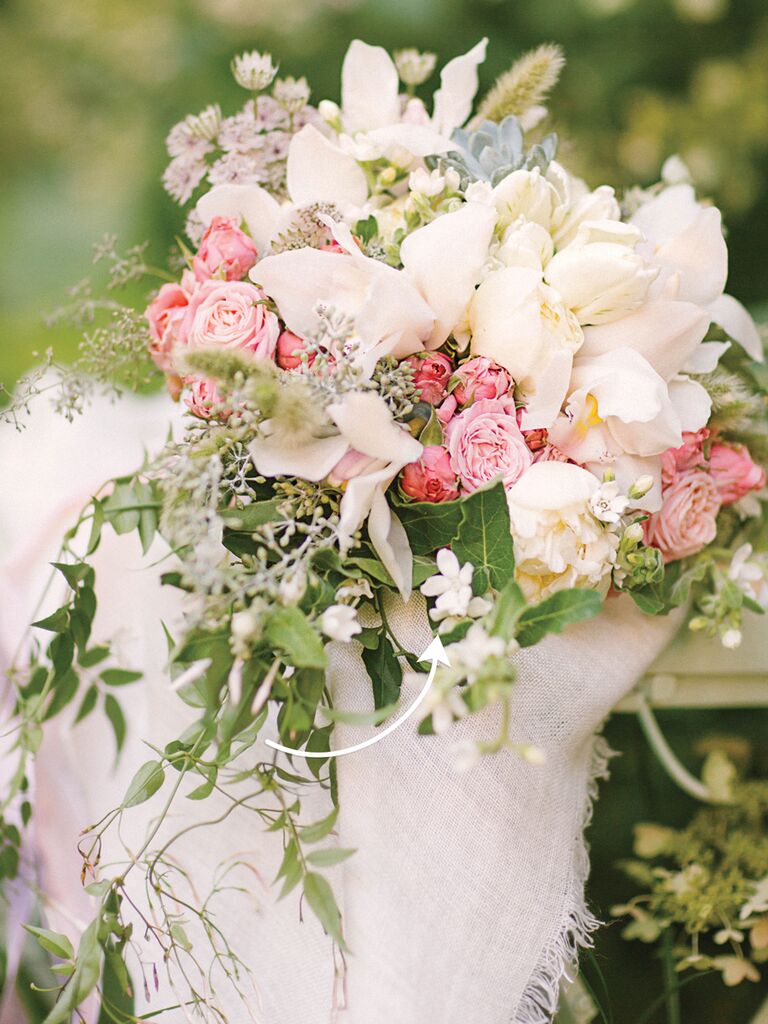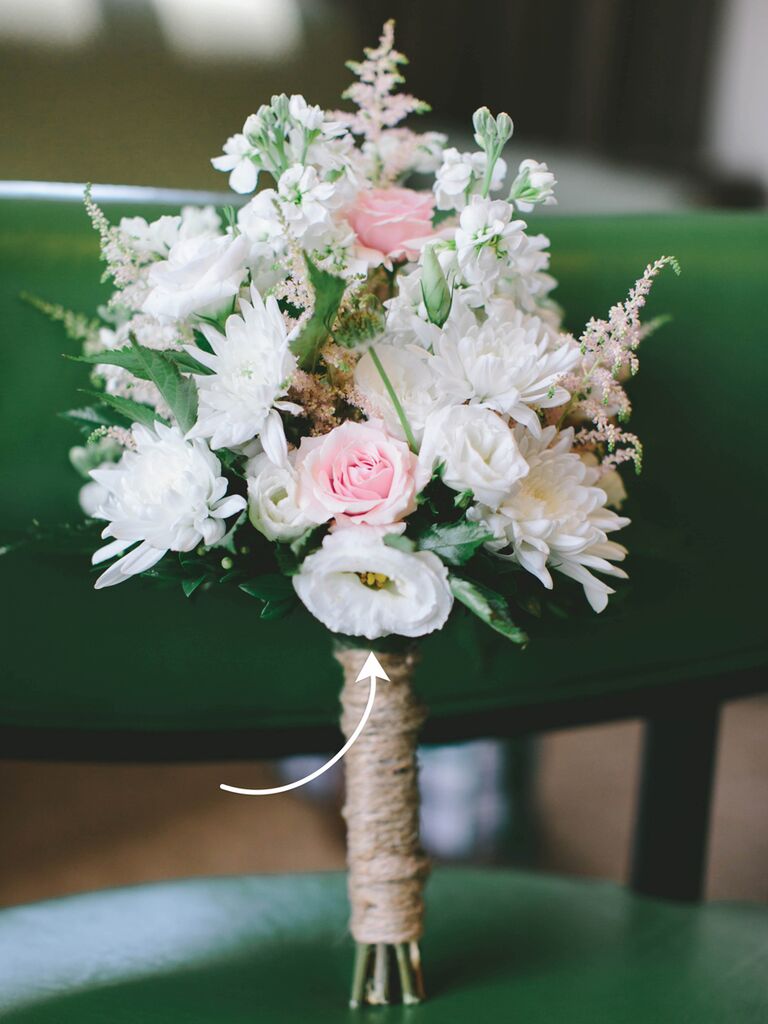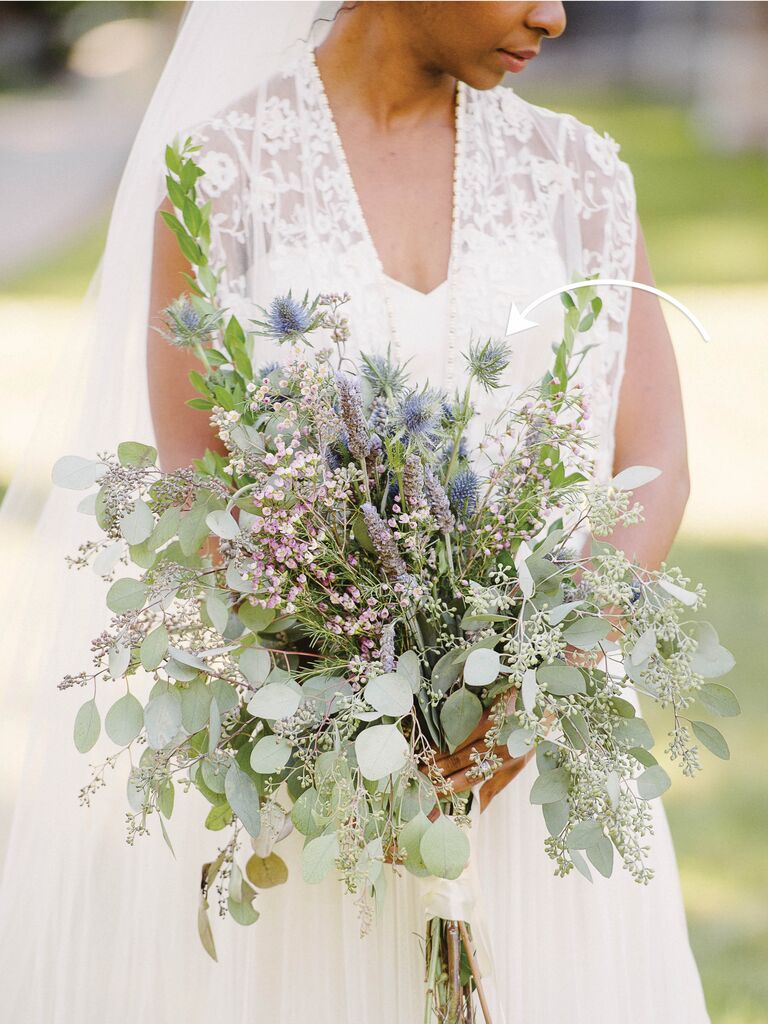We get it. Sometimes trying to describe your favorite flowers to a florist is kind of like trying to tell the car repair shop what sound your engine is making. Unless you’ve been around the block a few times, it’s hard to develop an extensive floral vocabulary (let alone remember the names of your favorite stems when talking budget). So we asked Gotham Florist to tell us which flowers they’re asked about most often when it comes to wedding blooms. From anemone to thistle, we’ve made you a little cheat sheet so you can brush up on your flower-speak before picking out your own stems.
Anemone
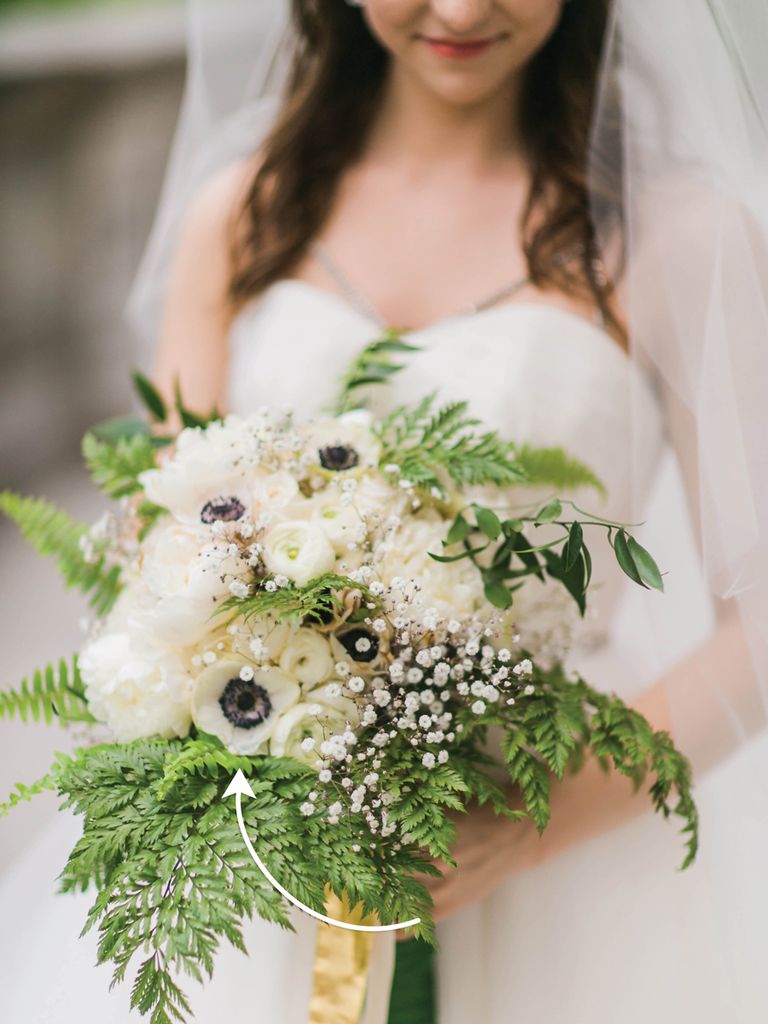 Catherine Rhodes Photography
Catherine Rhodes PhotographyThis small bloom comes in a range of jewel-toned hues, but white may be its most popular color. Not to mention, it’s one of the only flowers that’s naturally black and white, making it a popular choice for black tie weddings.
Blushing Bride
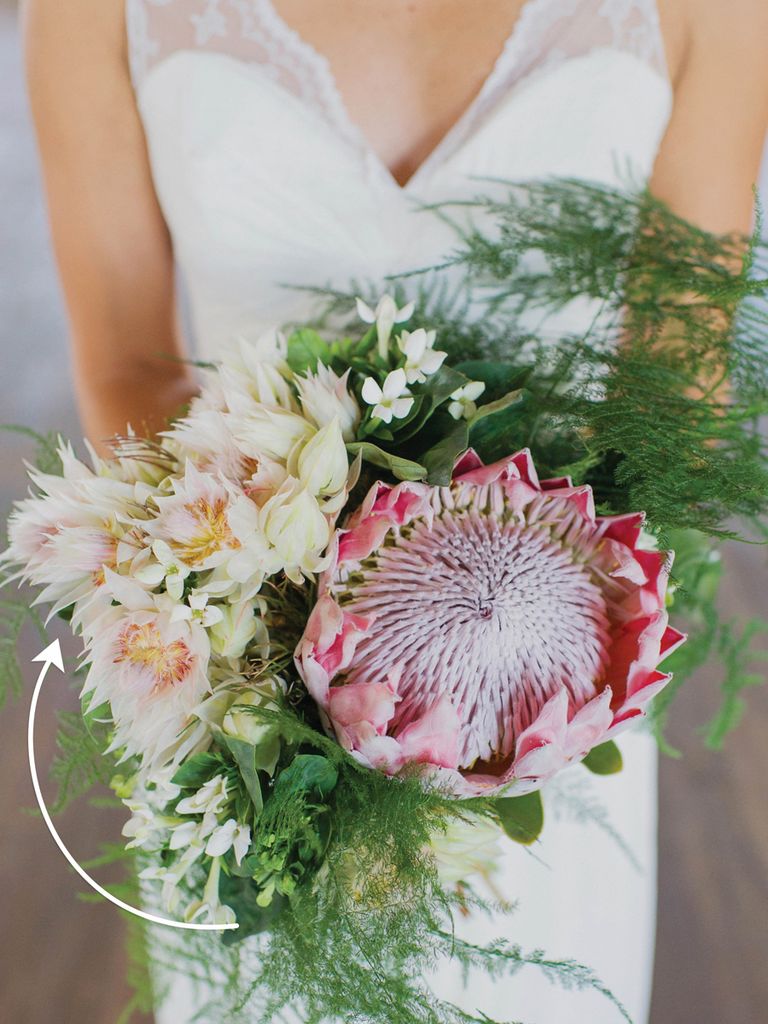 Christina Lilly Photography
Christina Lilly PhotographyThe pointy petals sported by this bloom are thanks to its roots in the protea family. We love the shape they add to an arrangement, and the name is just too perfect.
Dahlia
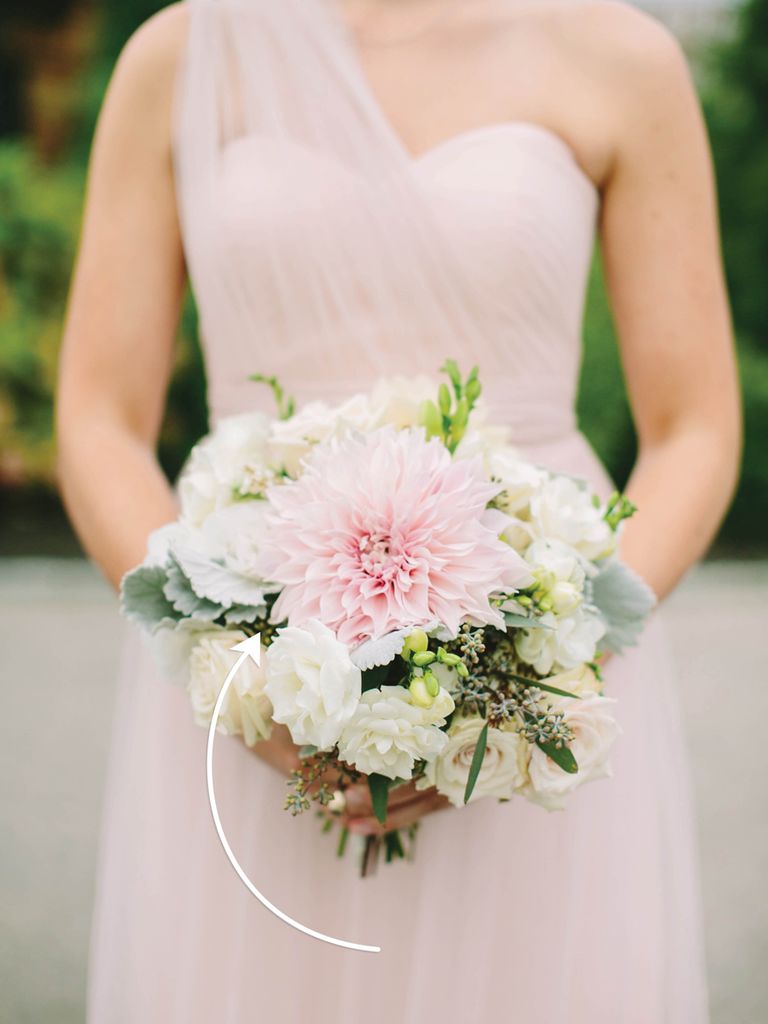 Rebecca Arthurs Photography
Rebecca Arthurs PhotographyDahlias come in all shapes, sizes and colors. They can grow to up to 10 inches in diameter or be as small as a button mum. The petals can grow in a straight, spiky fashion or in a round, tube-like shape, and the colors range from pastels to jewel tones and monochromatic combinations.
Garden Rose
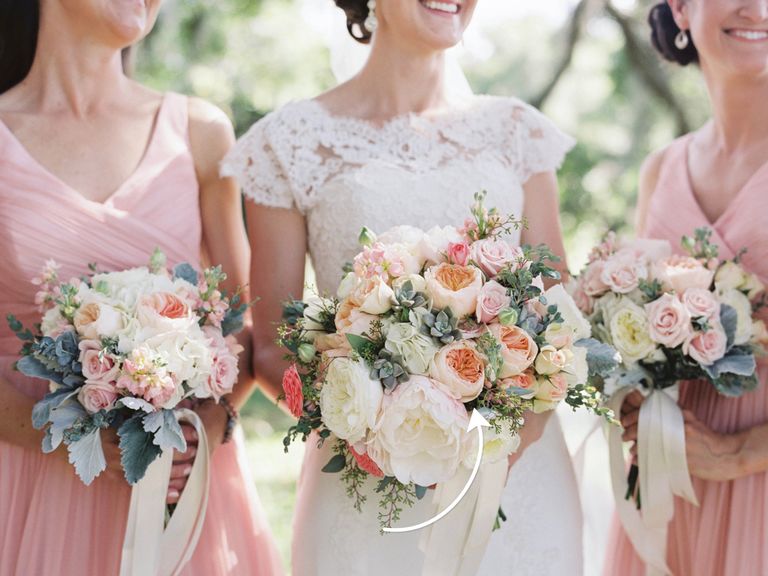 Cassidy Carson Photography
Cassidy Carson PhotographyThis sought-after rose hybrid (also know as a David Austin English rose) adds depth to a bouquet and some amazing fragrance. Its many petals are reminiscent of a peony, while the shape maintains its traditional rose demeanor.
Hellebore
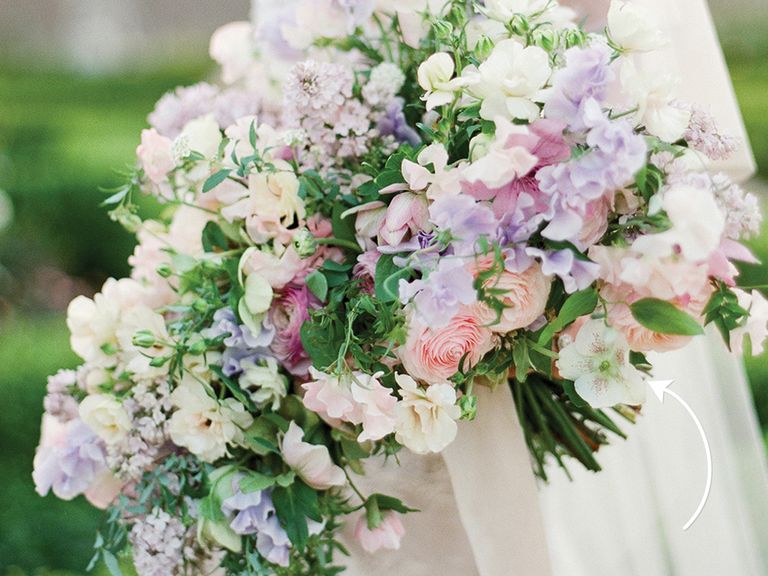 Jose Villa
Jose VillaBeside a true red or blue, hellebore comes in every color. Even though it’s a smaller bloom, we love the shape its sharp petals add to a bouquet filled with rounded blooms.
Jasmine
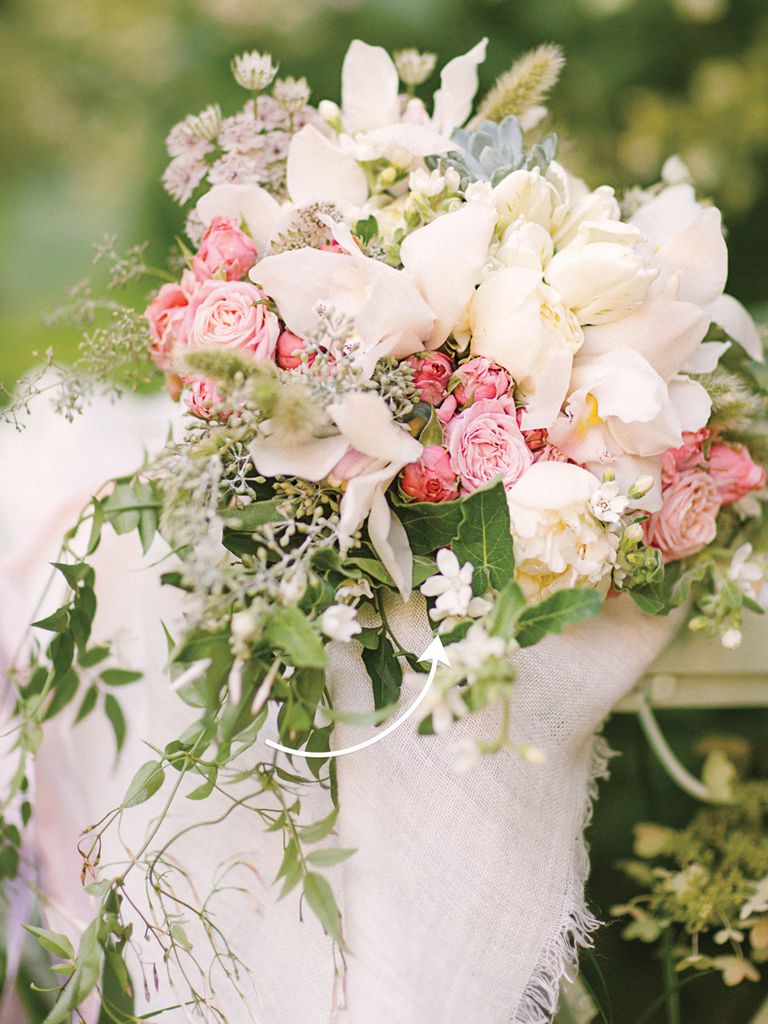 KT Merry
KT MerryJasmine is a popular choice for romantic, whimsical bouquets because of its cascading vine structure and small white blooms (not to mention the intoxicating scent).
Lily of the Valley
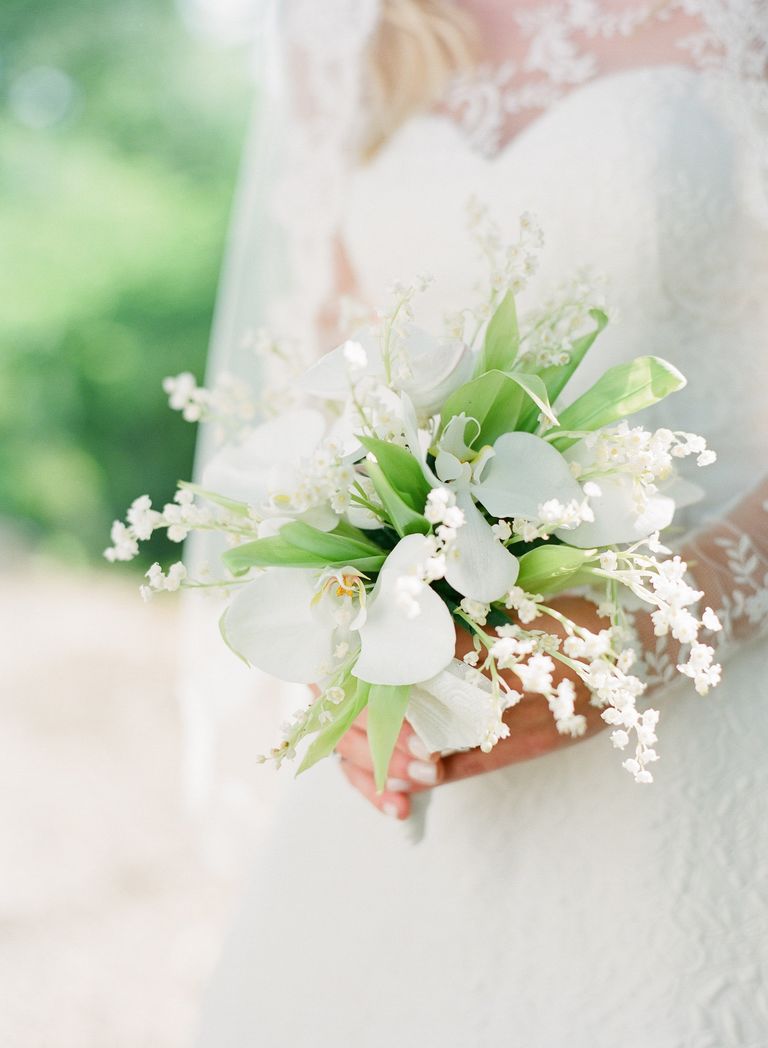 Buffy Dekmar
Buffy DekmarThanks to royal brides like Kate Middleton, lily of the valley has become an iconic wedding flower. Its little bell-shaped blooms are clustered close together on a vine-like stem, making it the perfect choice to offset big-headed blooms in large bouquets.
Lisianthus
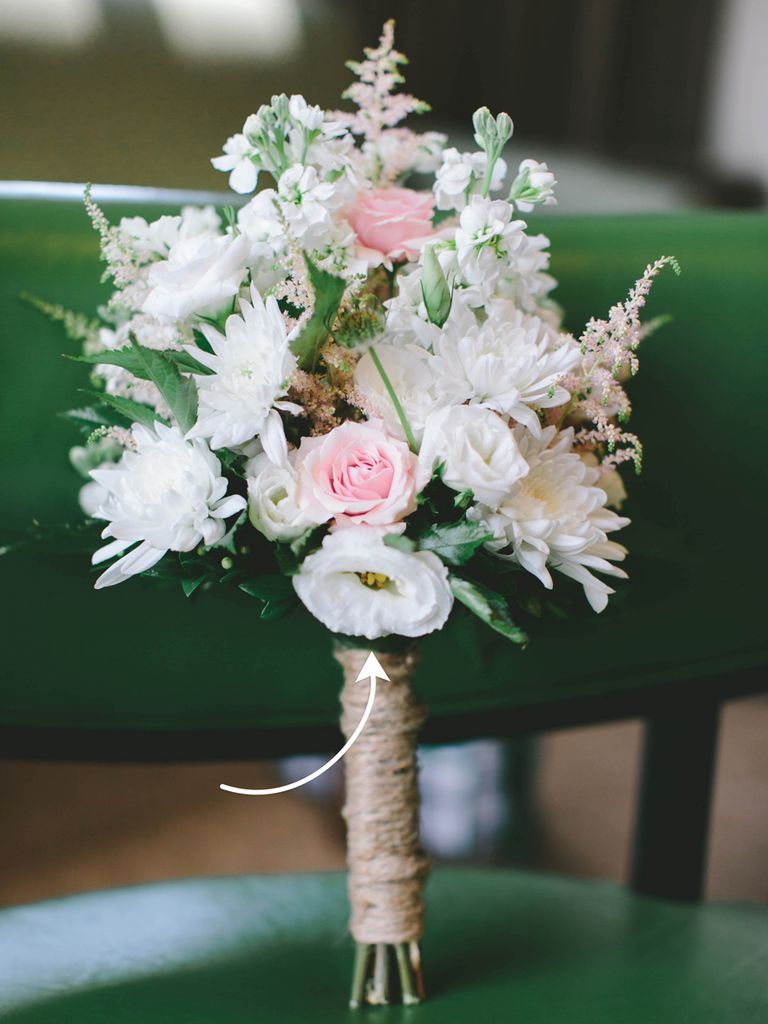 Steven Michael Photography
Steven Michael PhotographyThe ruffled petals look similar to a rose, but the center of lisianthus is what separates it from the pack. It’s also a hardier flower, making it a great choice for warm temperatures.
Peony
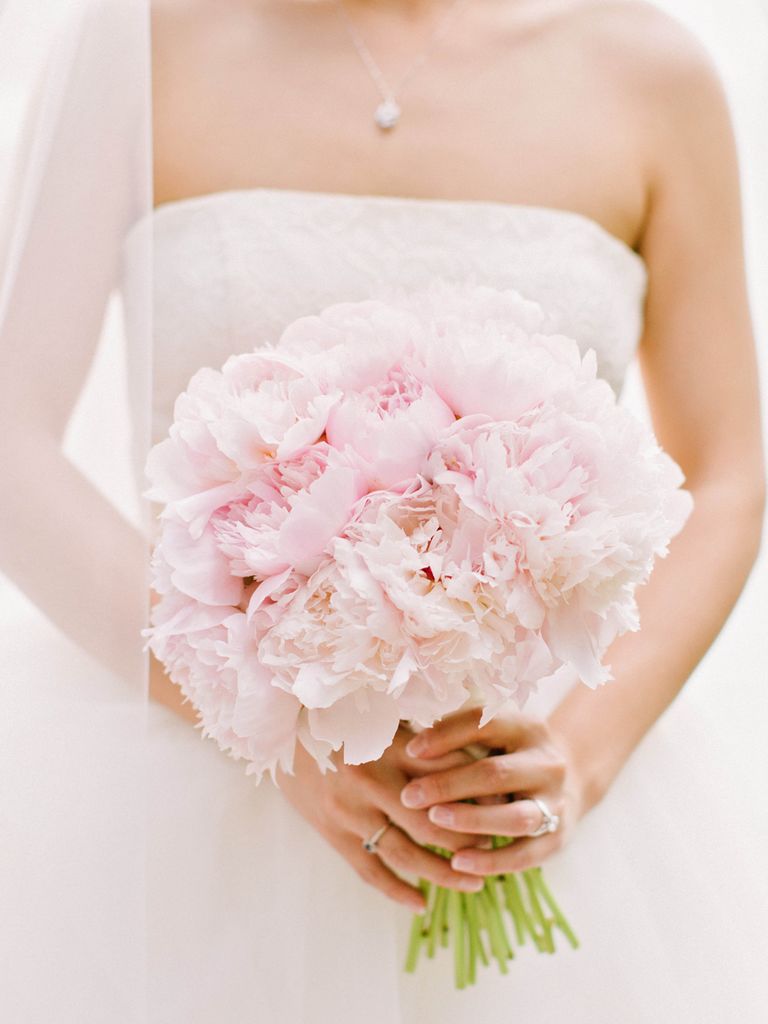 Amy Arrington Photography
Amy Arrington PhotographyMaybe the most requested of all wedding flowers, the big-headed peony makes for a beautiful bouquet on its own, mixed with other flowers like ranunculus or roses, or combined with fillers like baby’s breath or greenery.
Ranunculus
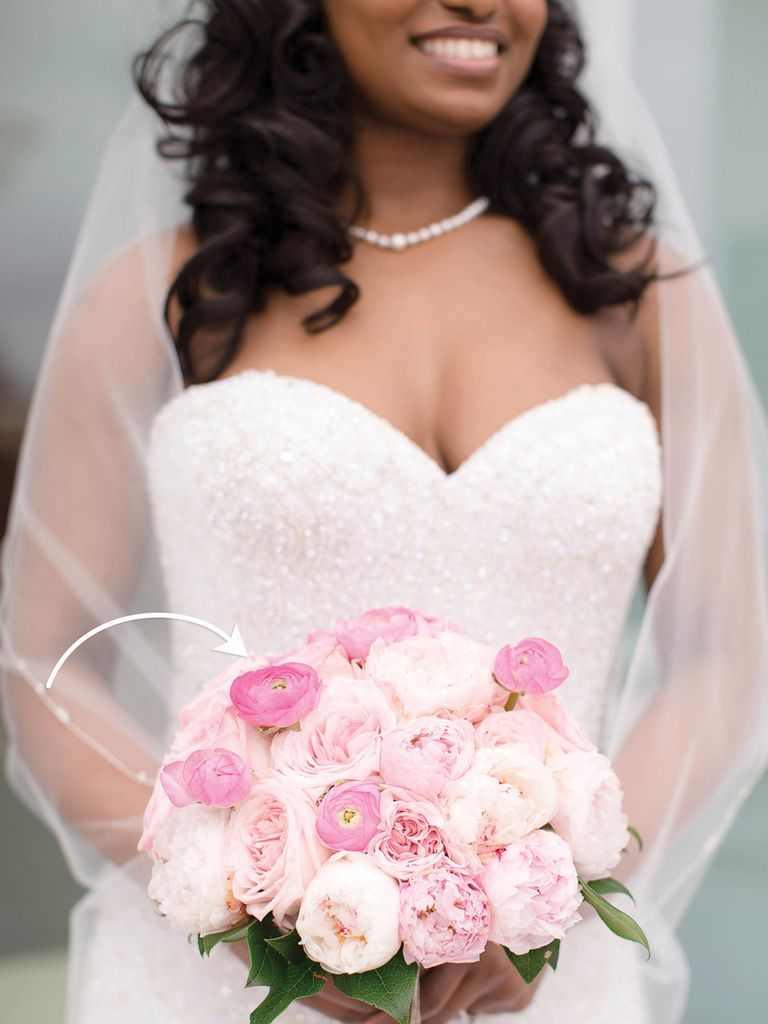 Photo Love
Photo LoveThough small in size, this petal-filled flower is used in a range of different-styled bouquets. It perfectly completes a round bouquet shape, or adds a sense of whimsy to a rustic-looking arrangement. And because of its size, it makes for the perfect boutonniere bloom.
Scabiosa
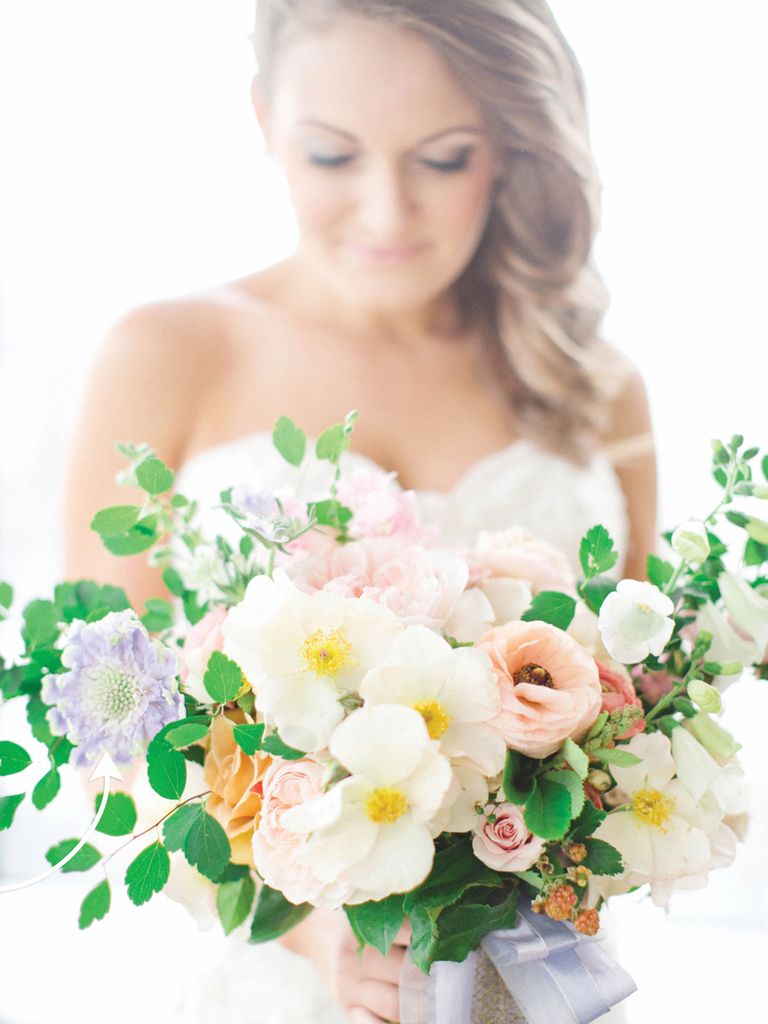 The Schultzes
The SchultzesYou’ve probably seen a lot of scabiosa pods recently (they shine in earthy-looking organic arrangements), but when the flower is in full bloom, it looks completely different. The seed-dotted center gives the flower an interesting architectural element that stands out among other stems.
Sweet Pea
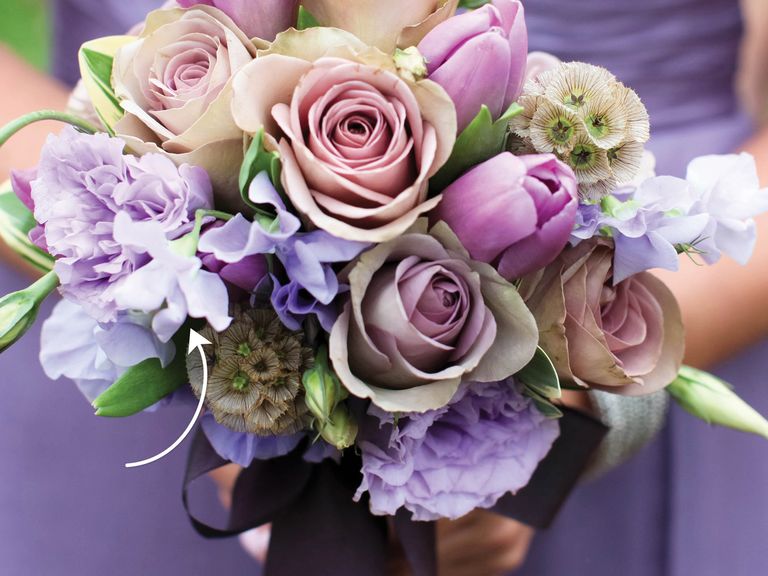 Kay English Photography
Kay English PhotographyThese ruffly, feminine-looking petals are a popular choice because of their sweet aroma and are often paired with big-beaded blooms like hydrangea or arranged all on their own with a sweet ribbon wrap. Different colors bloom in different seasons, so check with your florist about what’s available when.
Thistle
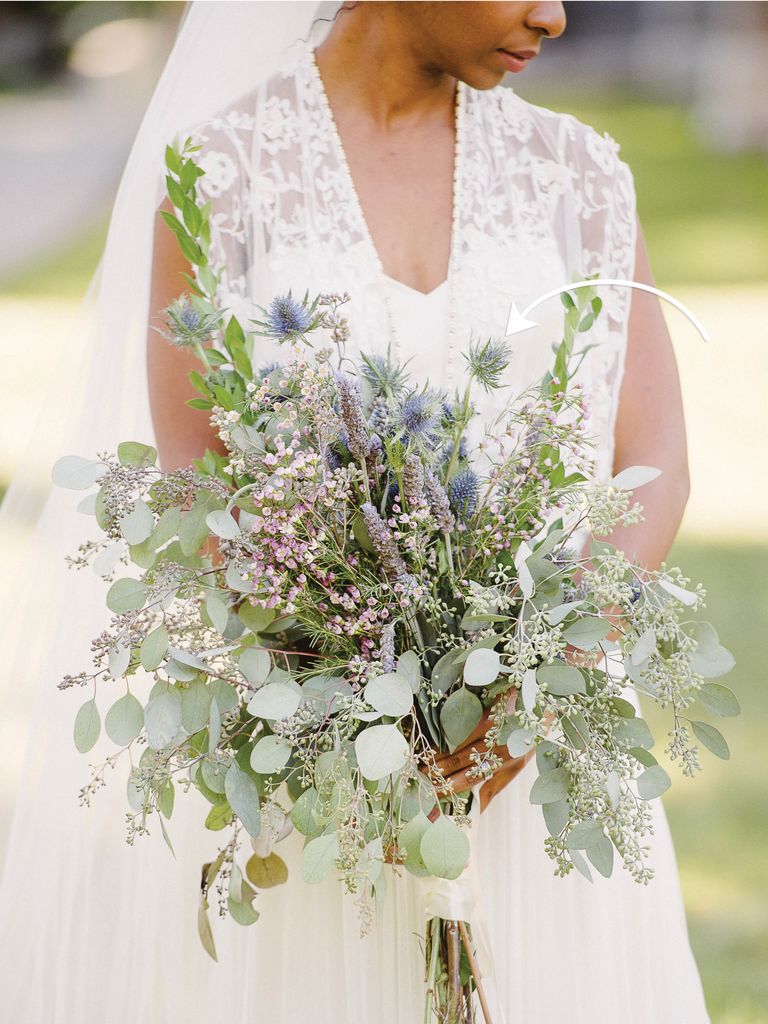 Sunglow Photography
Sunglow PhotographyThe distinctive shape of a thistle makes it a total stand-out stem. It has an interesting texture and is one of the few true blue florals out there. The best part? Since there’s no petals, there’s nothing to wilt, so these will last all through your wedding, no matter how hot it is.

